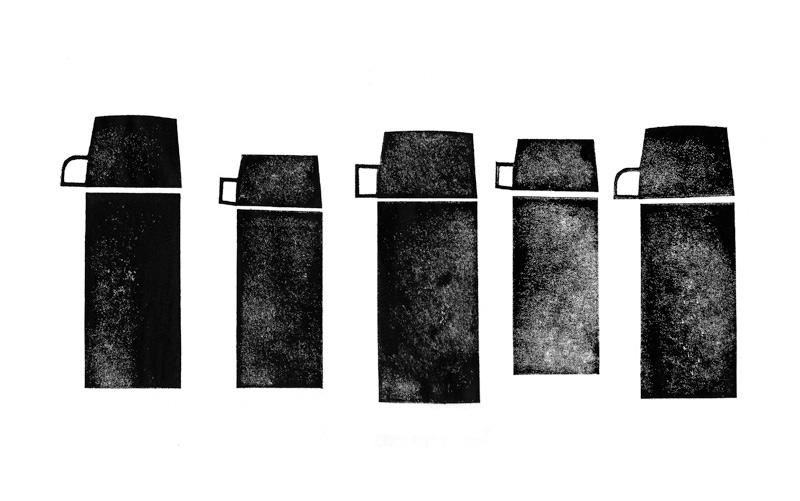Words by Tim Hayward
Illustration by Louise Sheeran
The Food Almanac
My Dad's Thermos
A piece of home

Words by Tim Hayward
Illustration by Louise Sheeran
An extract from The Food Almanac: Recipes and Stories for a Year at the Table.
The Thermos sits at the back of the bottom shelf in my kitchen cupboard. You have to mine to find it, through strata of rarely used gadgets. It’s a little rusty around the bottom rim, the plastic cup on the top is a probable mismatch and the tartan would be more associated with cheap, mass-produced shortbread than any actual clan. I found it in a smelly old fishing bag when I was cleaning out Dad’s stuff. Obviously, I couldn’t throw it away.
The Dewar or vacuum flask was invented by Sir James Dewar in 1892, a delicate double-walled vessel of silvered glass that, for a while, would slow the process of cooling or warming of a liquid stored in it. The flask itself was usually clad in a protective layer of cork and then a decorated metal sheath… the ‘Thermos’ we know so well.
Both my grandfathers carried Thermos flasks through the war: one in the freezing fuselage of a bomber, the other to the factory where he built aero engines and at night to the anti-aircraft battery he manned, protecting his factory, town and family. During that era, men carried Thermoses in the bottom of a gas-mask bag, slung over a shoulder as they climbed cranes, dug holes, drove trains, manned lathes and won coal. By the time my father was going to work, there was an office kettle and he could stop at a transport caff when he was out on the road. But the Thermos would still come out, packed for long drives, family picnics and fishing trips.
I got the Thermos when I was sent to a horrible school, a miserable, repressive shithole and joysink, where my parents, bless their hearts, thought I might benefit from its brand of education. I have never been unhappier in my life, but Mum (who knew) understood that hot soup had therapeutic value. She could see that the essential element of the Thermos had never really been James Dewar’s miraculous thermal engineering, but its magical ability to carry a piece of home, the hearth and the person – usually wife or mother – who had filled the thing before you left. Like a tribal fetish or saint’s relic, it could hold spiritual power and transmit love.
I don’t use the Thermos any more. I’ll probably never pick it up and shake it to see if the fragile interior is still intact. I’ll probably never taste again the stewed orange tea with evanescent undertones of coffee and the background redolence of Heinz Cream of Chicken. Maybe I don’t need to carry ‘home’ in my bag; just a laptop is enough, and I can always grab a hot drink or soup wherever I am. It even feels a little embarrassing, oddly gendered – an accoutrement of masculinity that has outlived its role.
I still can’t bring myself to dump it. Maybe I should dig out Dad’s old rods and take it fishing, maybe I’ll take it to the hill where the anti-aircraft battery stood, or maybe I’ll keep it – it would make an admirable urn for my ashes.
For more stories and recipes to take you through the culinary year, order your copy of The Food Almanac here





